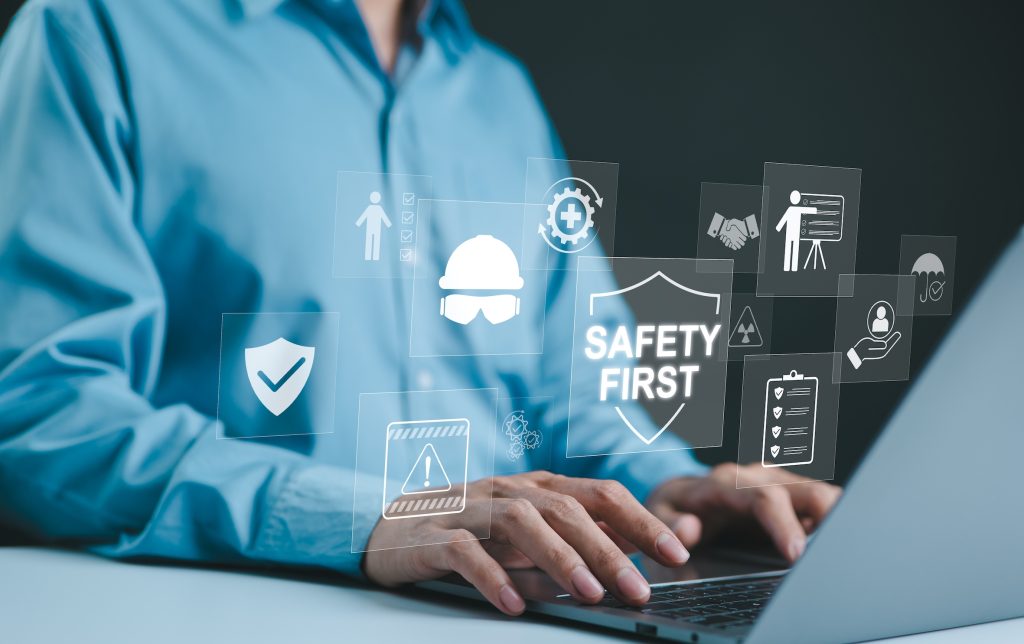The latest AI, automation and tech that are making Legionella detection faster and easier.
While you’re still flipping through that dog-eared water testing logbook with entries smudged by water stains (ironic, isn’t it?), the world of Legionella detection has undergone a technological revolution that would make James Bond’s Q Branch jealous.
At HCS Water Treatment, part of Premier Technical Services Group Ltd (PTSG), we’ve witnessed this evolution firsthand over our three decades in the water safety business. We’ve gone from the days of handwritten temperature logs and waiting weeks for culture results to an era where AI algorithms can predict potential Legionella hotspots before the bacteria have even booked their accommodation.
If you’re still relying on methods from the last millennium to protect your buildings and people, you might as well be using carrier pigeons instead of email. Let’s bring you up to speed on the smart tech that’s changing the Legionella detection game.
The Evolution of Legionella Testing: From Stone Age to Space Age
The Traditional Approach: Effective but Slow
The conventional culture method where water samples grow on special media plates has been the gold standard for decades. It’s like slow-cooking a roast: reliable results, but you’re waiting 10-14 days while bacteria throw their microscopic house party on your agar plates.
This method still has its place (and is still referenced in ACoP L8 guidance), but relying solely on culture testing in today’s fast-paced environment is like insisting on sending telegrams in the age of instant messaging.
The Smart Revolution: Testing Gets a Brain Upgrade
The new generation of Legionella detection technologies doesn’t just work harder – it works smarter:
1. Real-Time PCR Technology: Results in Hours, Not Weeks
PCR testing for Legionella has transformed from emerging technology to established methodology faster than you can say “deoxyribonucleic acid” (which, thankfully, you won’t need to).
How it works: By detecting and amplifying specific DNA sequences unique to Legionella bacteria, qPCR delivers results in hours rather than days.
The game-changer: When an outbreak is suspected, waiting 10 days for culture results isn’t just inconvenient – it’s potentially dangerous. PCR testing can deliver actionable information within the same working day.
Smart application: Combining PCR for rapid screening with selective culture testing gives you both speed and detail, like having your cake and detecting it too.
2. IoT Sensors: Your 24/7 Water System Bodyguards
Remember when you had to send someone to manually check water temperatures throughout your building? Those days are disappearing faster than biscuits in a staff room.
How it works: Internet-connected sensors continuously monitor critical parametres – temperature, flow, disinfectant levels, even turbidity – sending real-time data to central monitoring systems.
The game-changer: These sensors don’t call in sick, don’t forget to record readings and don’t wait until scheduled visits to tell you there’s a problem.
Smart application: Strategically placed IoT sensors can create a comprehensive picture of your entire water system, identifying problematic areas that periodic manual testing might miss entirely.
3. AI-Powered Predictive Analytics: Crystal Ball Included
If IoT sensors are the nervous system of smart water management, artificial intelligence is the brain making sense of all those signals.
How it works: AI algorithms analyse patterns from thousands of data points, identifying conditions conducive to Legionella growth before bacteria reach dangerous levels.
The game-changer: Moving from reactive to predictive testing means addressing risk factors before they become actual risks.
Smart application: Machine learning systems can correlate seemingly unrelated factors – like changing occupancy patterns, weather conditions, and maintenance schedules – to predict potential Legionella hotspots with uncanny accuracy.
4. Digital Twin Technology: Your Water System’s Virtual Doppelgänger
Digital twins aren’t just for aerospace engineering anymore they’re revolutionising water safety management.
How it works: Creating a virtual replica of your entire water system allows for simulation, testing, and optimisation without disrupting your actual operations.
The game-changer: You can model different scenarios “What if we adjust this temperature?” “What if building occupancy drops by 40%?” and see the likely impact on Legionella risk.
Smart application: When planning system modifications, digital twins can identify potential dead legs or stagnation points before a single pipe is installed, preventing design flaws that could become Legionella’s next favourite holiday destination.
5. Rapid In-Field Test Kits: Lab-Quality Results Without the Lab
New-generation field testing kits are transforming on-site detection capabilities beyond simple dipsticks and colour-change tests.
How it works: Using techniques like lateral flow immunoassays (similar to COVID rapid tests) or portable PCR devices, these kits can detect Legionella antigens or DNA with impressive sensitivity.
The game-changer: Getting preliminary results while still on site means immediate corrective actions rather than waiting for lab reports.
Smart application: These kits are perfect for high-risk settings or following suspected exposure events, providing a critical first line of detection that can trigger more comprehensive testing if needed.
Beyond Detection: Smart Management of Results
It’s not just about collecting data it’s what you do with it that matters:
Cloud-Based Compliance Platforms: Your Digital Water Safety Filing Cabinet
The days of bulging folders and missing test records are over. Modern compliance platforms like our ZetaSafe Dashboard offer:
- Real-time compliance visibility across multiple sites
- Automated alerting when parameters drift out of specification
- Secure, tamper-proof record-keeping for regulatory evidence
- Trend analysis to spot potential issues before they become problems
- Mobile access for facility managers and water safety teams
Geospatial Mapping: Seeing the Bigger Picture
For organisations managing multiple properties, geospatial technology adds another dimension to water safety:
- Visual mapping of test results across your entire estate
- Identification of regional or building-type patterns
- Prioritisation of resources based on risk profiles
- Simplified reporting for multi-site operations
The Human Element: Why Smart Tech Still Needs Smart People
Before you worry that robots are coming for the water safety industry, take a breath. The smartest technology in the world still needs human expertise to be truly effective.
At HCS Water Treatment, our approach combines cutting-edge technology with 30 years of hands-on experience. Because while AI can process data at lightning speed, it hasn’t spent three decades elbow-deep in cooling towers and pipework, developing the intuition that comes only from real-world experience. The most effective water safety programmes use technology to enhance human expertise, not replace it creating a partnership where each plays to its strengths.
Making the Transition: From Traditional to Smart Testing
Ready to bring your Legionella testing into the 21st century? Here’s how to approach the transition:
- Start with a technology audit: Assess your current methods and identify where smart technologies could have the biggest impact
- Consider a hybrid approach: Integrate new technologies alongside established methods rather than making a sudden wholesale change
- Focus on data integration: Ensure your new smart systems can talk to each other and provide unified insights
- Train your team: The best technology is only as good as the people using it
- Develop clear protocols: Establish when and how to use different testing methodologies based on risk profiles
The Cost Equation: Smart Investment vs. False Economy
We can hear the objection already: “But all this fancy tech must cost a fortune!”
Let’s do some simple maths:
Traditional approach costs:
- Manual sampling and lab testing
- Staff time for data entry and management
- Remedial actions after problems are detected
- Potential outbreak costs (business interruption, legal liability, reputation damage)
Smart approach costs:
- Initial technology investment
- Reduced manual testing frequency
- System maintenance and monitoring
- Significantly lower risk of undetected problems escalating
When you factor in the reduced risk of outbreaks, lower labour costs and more efficient use of resources, smart testing typically delivers a compelling return on investment especially when you consider that a single Legionnaires’ disease case can cost millions in direct and indirect expenses.
HCS Water Treatment: Your Partner in Smart Water Safety
As specialists in water engineering and legionella control for over three decades, at HCS Water Treatment we’ve stayed at the forefront of technological advances in water safety. Our formula for water safety success – innovation, expertise, systems, and people – positions us perfectly to help you implement smart testing strategies that provide both protection and peace of mind.
From our Glasgow headquarters to sites across the UK, we’ve built our reputation on making water safety both effective and manageable. Our approach combines the latest smart technologies with our deep practical experience, creating water safety programmes that don’t just tick compliance boxes but genuinely protect people.
The smartest Legionella testing isn’t about having the newest gadgets it’s about using the right technology in the right places with the right expertise behind it.
Ready to bring your Legionella testing into the modern era? Contact HCS Water Treatment today on 0141 212 7247 or email us at hello@hcsuk.org to discuss how smart testing technologies could transform your water safety program. Because when it comes to protecting your buildings and people, being stuck in the past isn’t just inefficient – it’s potentially dangerous.


